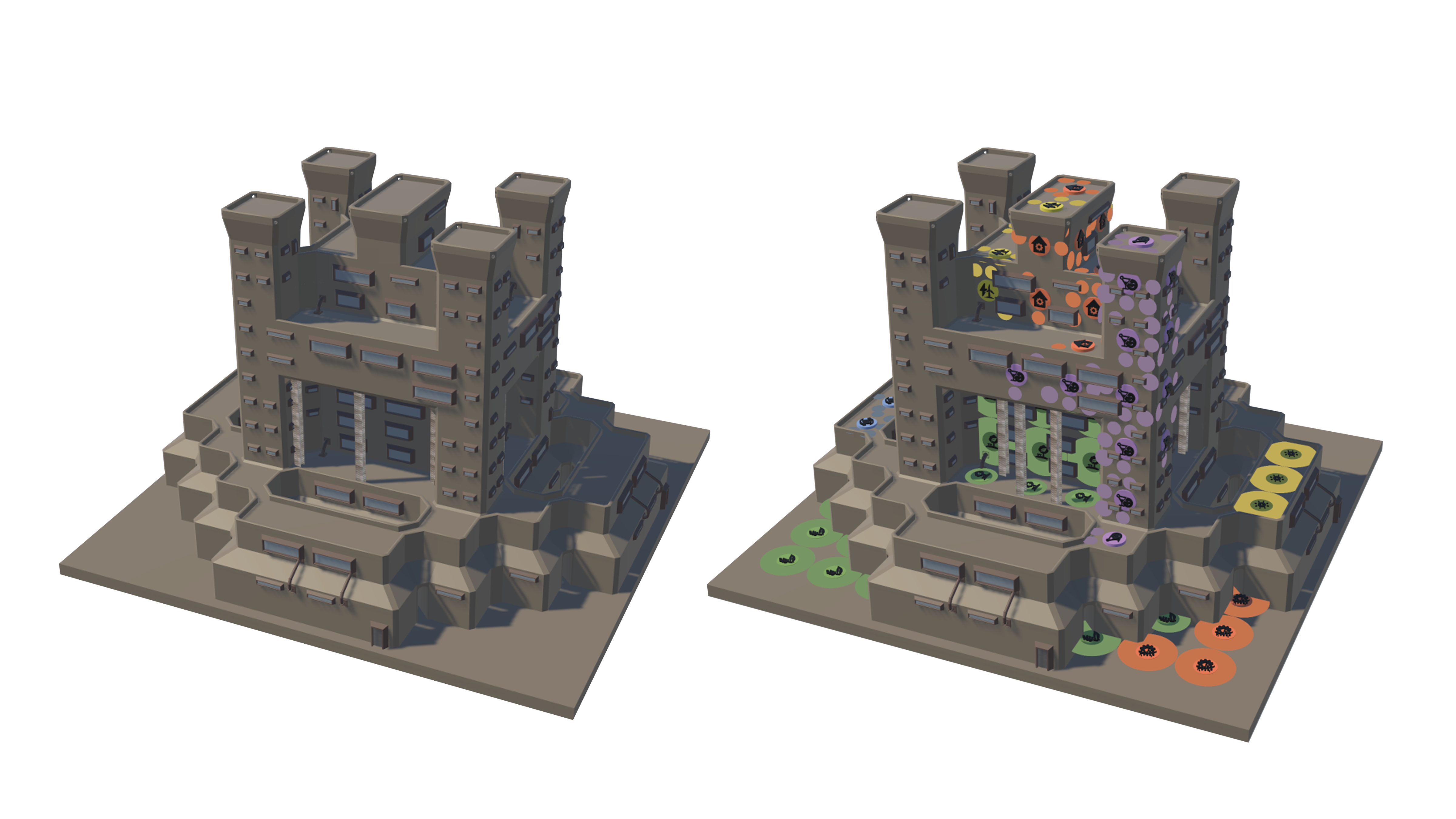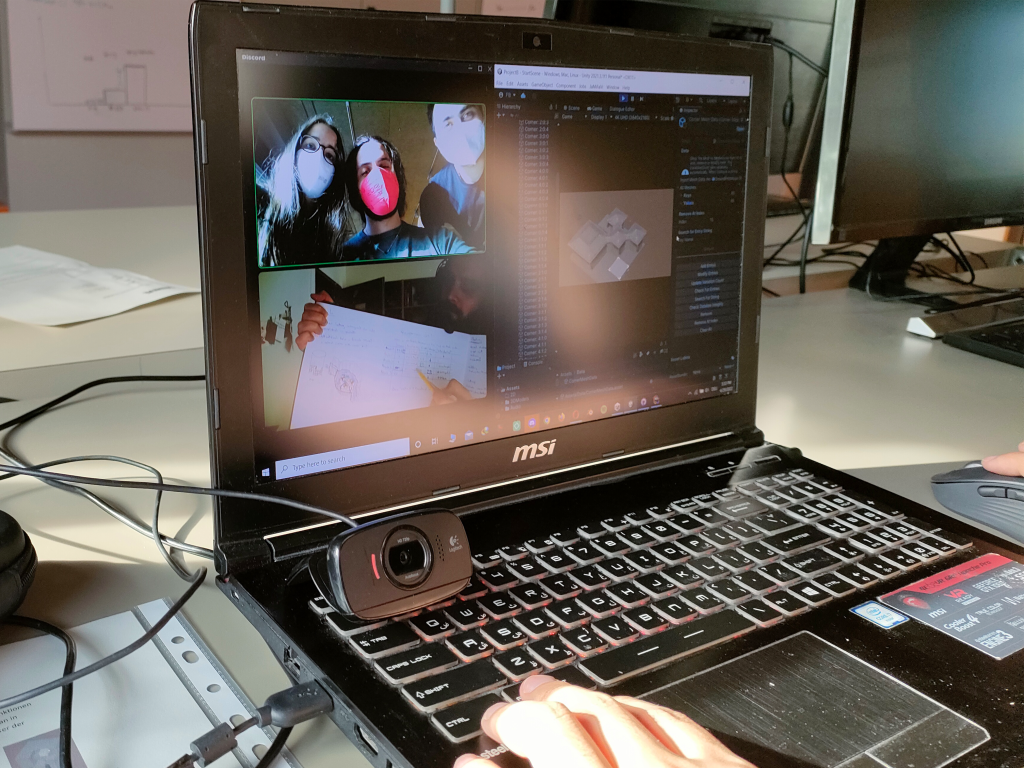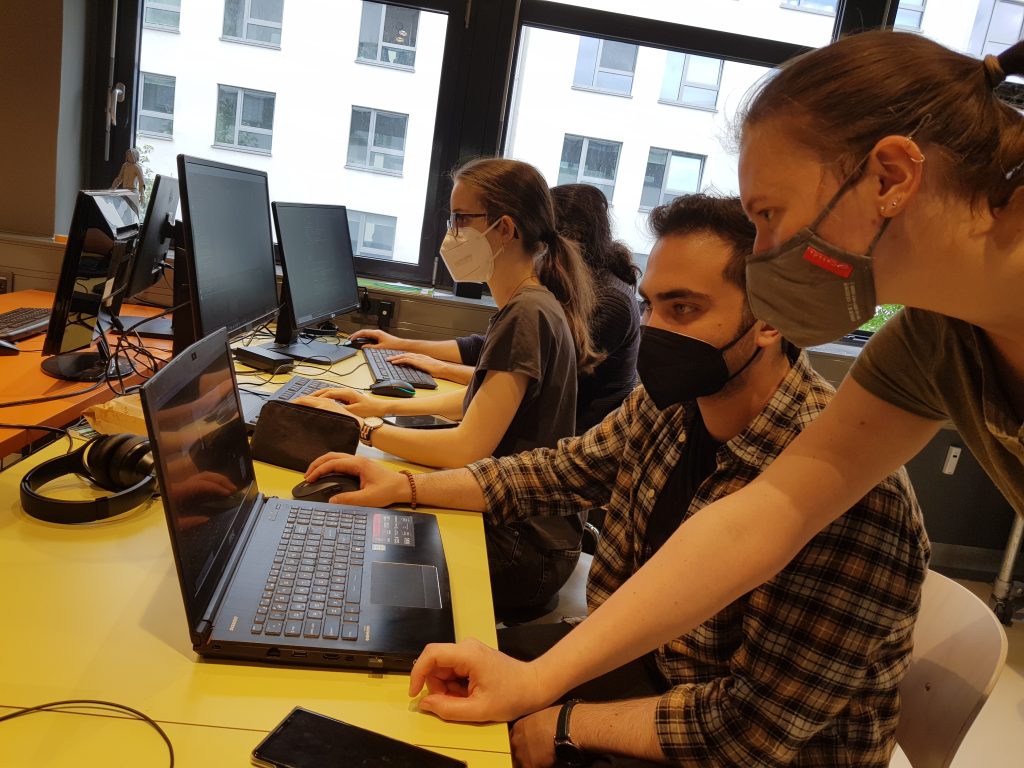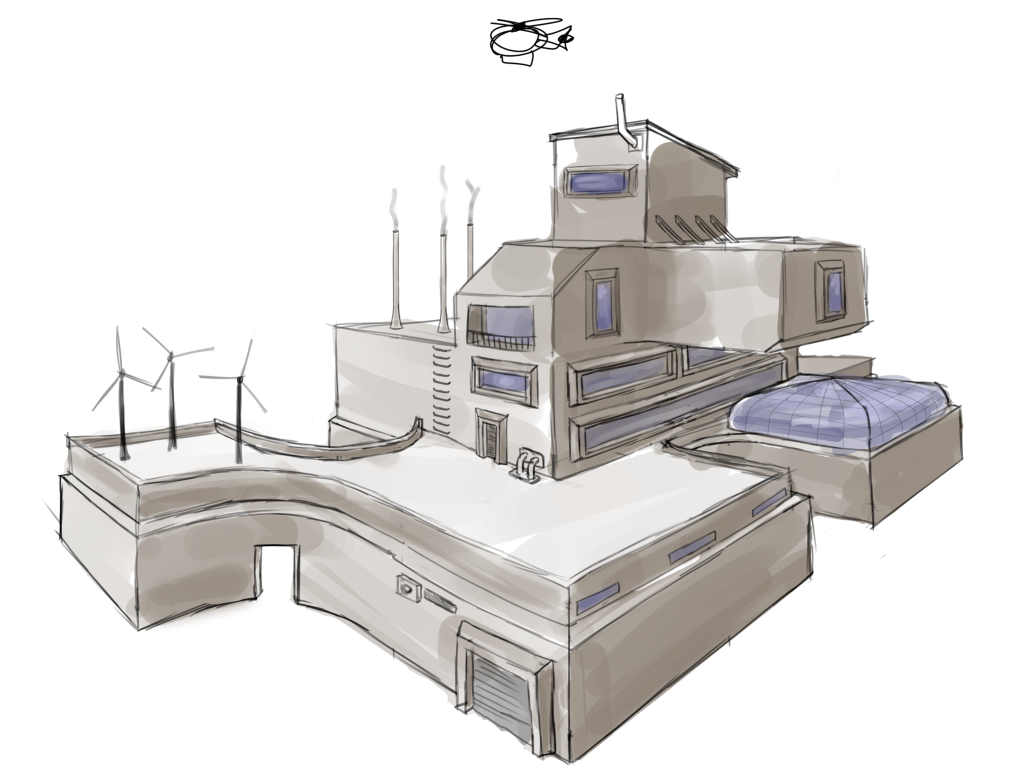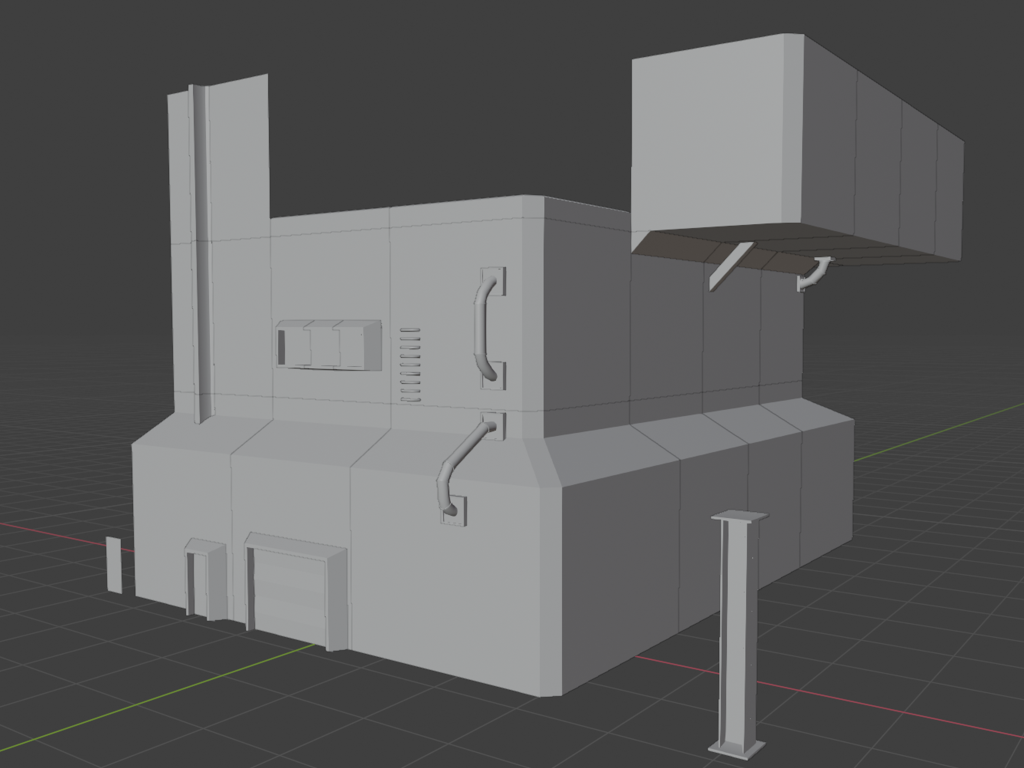Looking Back
Now is the future!
Looking Back offers players a serene journey through a single-player experience, where they inherit a small settlement reminiscent of our current world. The challenge lies in strategically equipping this settlement with essential utilities to endure and prosper within its confined environment. Every decision made in resource allocation resonates until the end, shaping the trajectory of the settlement’s future.
Developed during a three-week experimental game jam, we decided to challenge our own skills and implement something experimental to our experience with game development. Anchored on complex systems like procedural growth and the Marching Cubes algorithm, the game defies convention, offering players an immersive and thought-provoking experience.
Centered on the theme of ‘change’, we delved into the concept of ‘making change for the future’. Our goal was to provoke contemplation on the individual and societal willingness to adapt and innovate for the betterment of tomorrow.
Project Overview
Date: 3 weeks at 4th semester (2022) at Game Design HTW Berlin
Team: 5
Software: Unity, Blender, Photoshop
Plattform: PC
Theme: Change
My Responsibilities
- Modeling and Texturing
- Game System Design
- Visual Development
Gameplay
The gameplay unfolds in several successive phases. Initially, players have the opportunity to construct their settlement according to their preferences. Additionally, they can opt to explore randomly generated or pre-built levels. Following this, players can allocate various resources to specific areas of their buildings. With a total of 16 different resources categorized into energy, water, industry, nature, and leisure, players must strategically manage their allocation to ensure the prosperity and sustainability of their settlement
Afterward, time swiftly progresses, allowing players to witness the dispersion of resources. The secondary values—population, ecological balance, and quality of life—fluctuate based on the resource balance. Upon reaching the future, players can assess the end result and choose whether to accept it or rewind time slightly. Here, they have the opportunity to make pivotal decisions that will alter the course of the future!
Build Phase

Resource Assignment Phase
Time Lapse Phase

Future and Decision Phase
Modeling and Implementation
For the Marching Cubes algorithm to function effectively, a minimum of 254 meshes is required, preferably 316 if both ground and roof elements are desired. Each mesh corresponds to a specific case that may arise during execution. However, for a simplified building system, only 86 unique meshes are necessary, which can be utilized in various orientations.
During the three-week development period, my primary responsibility was to model and implement a minimum of 86 meshes. Once this requirement was met, the focus shifted to adding visual variations and intricate details to enhance the variety of the buildings.
Taking on this responsibility carried significant weight, as I understood the pivotal role it played as the cornerstone of our project. While the other systems could have operated autonomously, the absence of meshes and the settlement would have left us without the essential foundation of our game concept. In that scenario, we would have been left with the task of cultivating resources on an empty canvas.
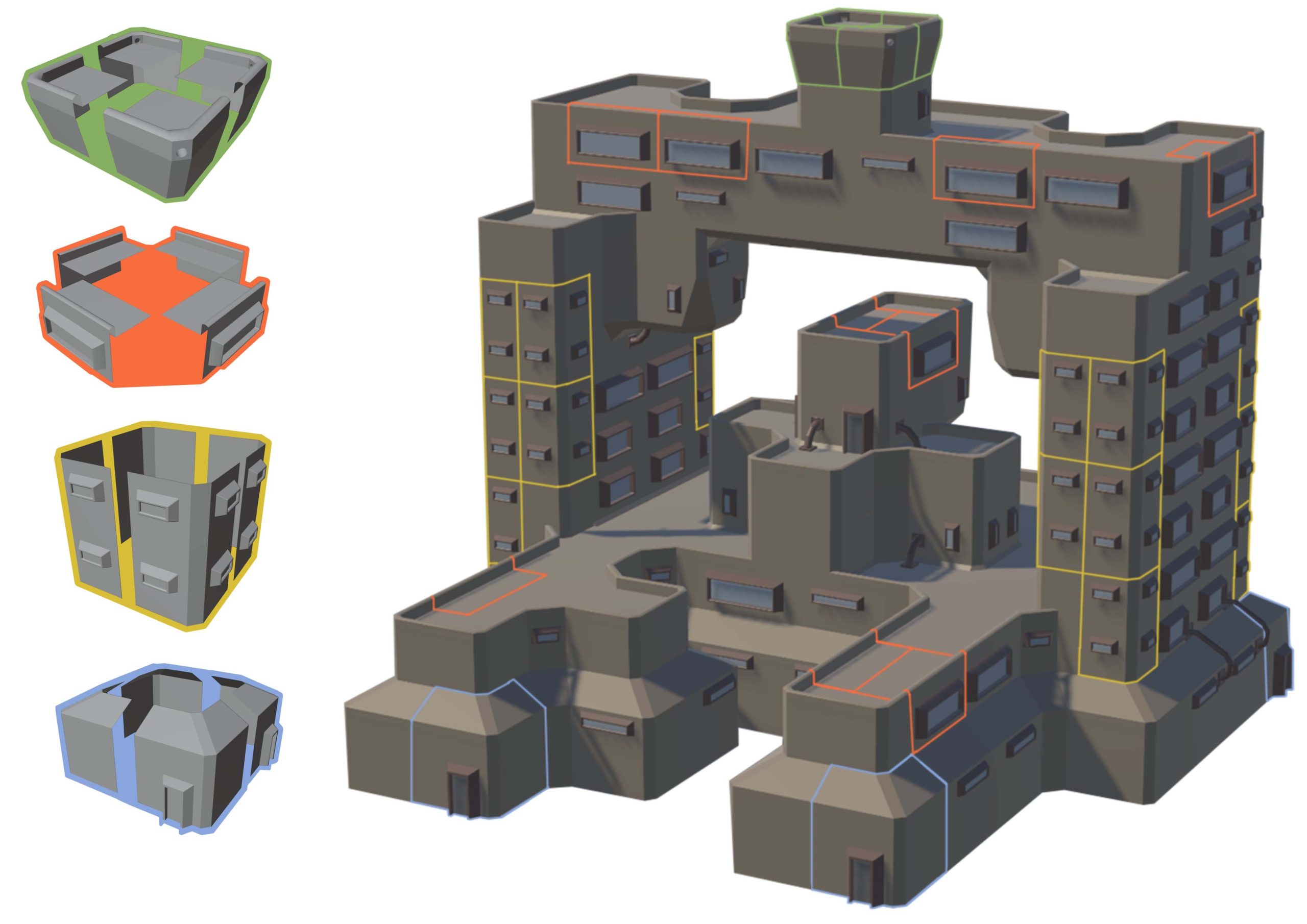
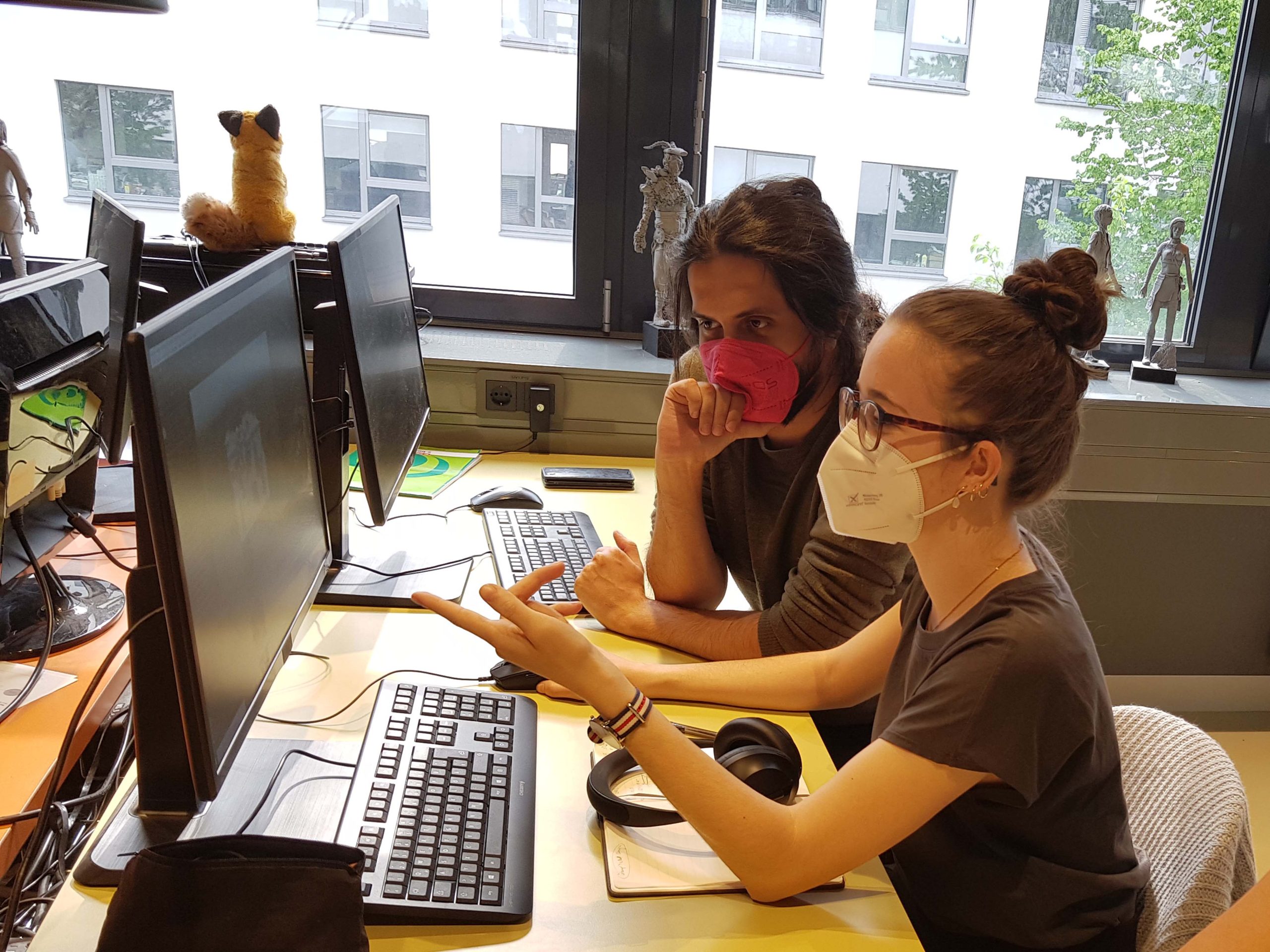
For implementing the meshes, I utilized a tool specifically developed for our project’s needs. This tool streamlined the process of importing the meshes into Unity and generating their respective rotations.
Ensuring the accuracy of each mesh and its rotations within the game environment was paramount. Even minor errors were readily apparent, particularly concerning precise alignment of walls and correct placement of pivots. Addressing these issues proved to be both the most common and time-intensive tasks.

For instance, all ground meshes in the image above lack intricate details like windows or doors. However, by adding various details to a single wall and saving them as variations, we could instantly enhance the diversity of the building. Even altering the shape of the wall posed minimal difficulty, as long as the edges remained consistent. In my view, the Marching Cubes algorithm is a remarkable system that unlocks a myriad of possibilities!

These represent 9 out of the 67 standard meshes. They are consistently employed throughout, except for the bottom and top floors, where the roof is situated.

These meshes are designed for the roof at its maximum height. While standard meshes also include roofs, we opted to create these additional ones for enhanced customization options, allowing us to tailor their appearance to our specifications.
Learnings
3D Modeling
focus on precision and speed
Efficiency
planning the most efficient approach, working efficient because of time limit
Unfamiliar Systems
understand and use unfamiliar systems
Development
At the outset, we faced the challenge of reconciling various concepts and ideas surrounding complex mechanics. This necessitated extensive discussions during the initial week, which proved to be quite demanding. Fortunately, we initially had access to studio spaces, although due to the COVID-19 pandemic, we later transitioned to a combination of remote work and hybrid arrangements.
Following the allocation of various work areas among team members, I commenced crafting the setting and defining an art style. I decided to pursue the direction of Brutalist architecture. Additionally, I initiated the creation of initial models and delved into exploring potential details. Meanwhile, the remainder of my team concentrated on refining mechanics and were deeply engrossed in programming tasks
This project was coached by Prof. Susanne Brandhorst and Prof. Thomas Bremer.


